Every country has at least one up-and-coming expat destination that is still a bit of a secret. In Spain, it's the region of Murcia and the Costa Cálida.
This guide will help you to discover what it’s like living in Murcia, one of Spain’s best destinations for tourists and expats alike.
Secure Peace of Mind with Best-Value International Health Coverage
International Citizens Insurance provide free, no-obligation quotes from the leading international health insurance providers with plans tailored to meet your needs. Trusted by thousands of expats worldwide.
Is Murcia good for expats?
Murcia is perfect for anyone who enjoys history, Spanish culture, gastronomy, nightlife, hot summers and the outdoors. It offers an authentic experience that big cities simply can’t and don’t.
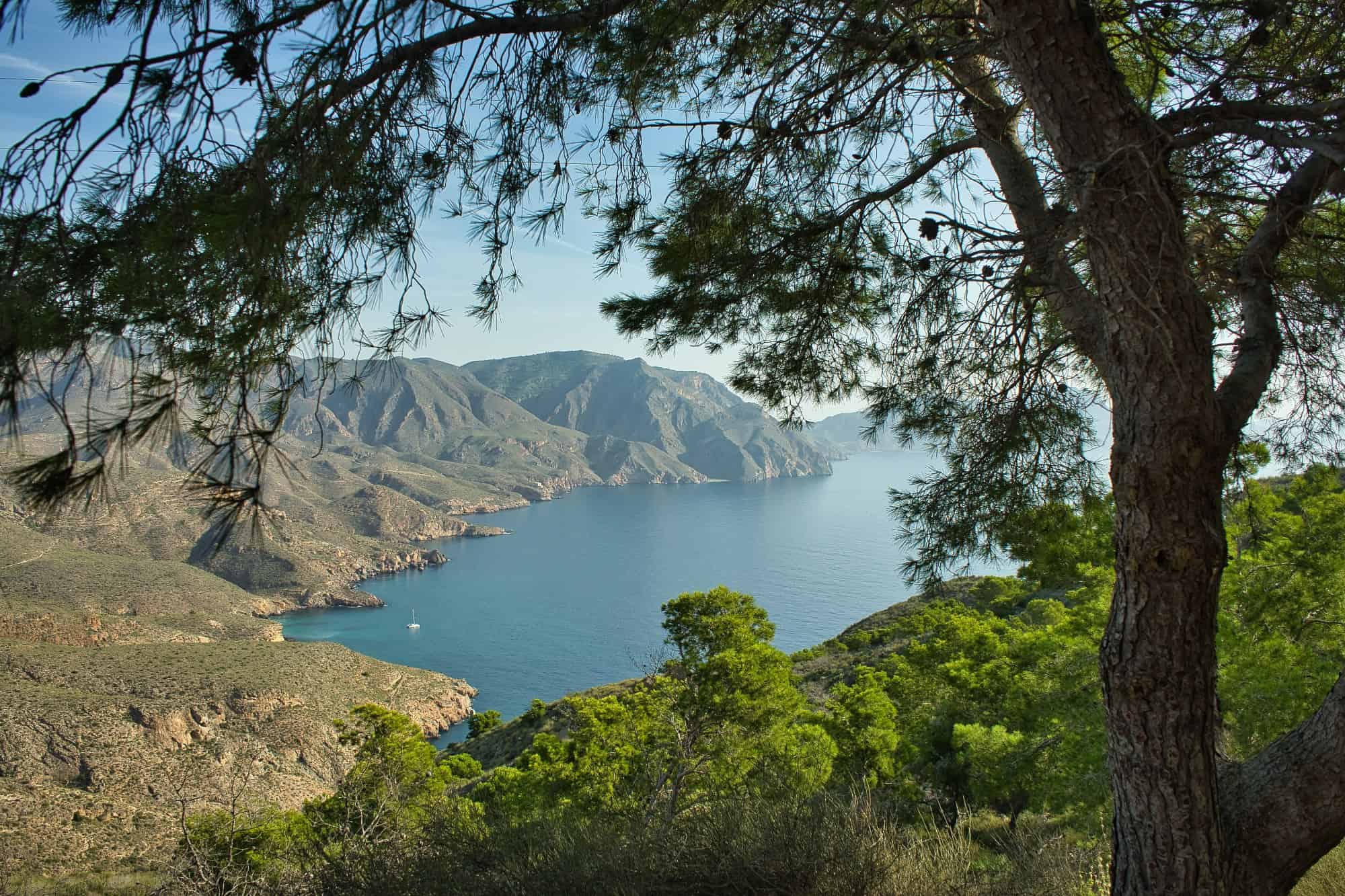
Murcia is nestled in the middle of Spain’s three southern regions: Andalucía, Murcia, and Alicante (Valencia), stretching 100 miles/160 KM inland from the Costa Cálida to the Sierra de las Pansas mountains.
It has year-round sunshine, hot summers, and short winters.
Many Spaniards call Murcia the California of Spain.
With one-third of its area as desert, Murcia is Spain's driest region and recorded Spain’s hottest temperature of 118F/47.8 C in 1976, nearly matching it in 2017 at 117F/47.2 C.
Murcia rises from its Spanish sands as an oasis. Its remaining two-thirds are so fertile the region is called La Huerta de Europa, Europe’s Orchard, because it's Europe’s largest producer of fruits, vegetables, and flowers.
With more than 200 wineries, Murcia is best known for the grape variety Monastrell, and its famous wine cheese, Murcia al vino, aka drunken goat cheese. It's made from unpasteurized goat milk from select Murcian herds, aged with wine, and bears a Protected Designation of Origin.
Murcia’s 155 mile/250 KM coastline, the Costa Cálida, encompasses over 200 beaches dotted along two bodies of water, the Menor Sea and the Mediterranean.
The Menor Sea is Europe’s largest salt-water lagoon, separated from the Mediterranean by La Manga, a 14-mile/22 KM sand bar. With a max depth of 4 feet/7m, it is the biggest swimming pool in the world.
Murcia is a successful nexus of nature and urban development. With its 18 national parks, reserves, and countless public gardens, Murcia is more nature than urban landscape.
Murcia’s economy significantly relies upon tourism, expats, and agriculture.
What it's like living in Murcia city
Murcia city is Spain’s seventh-largest, with a population of under half a million.
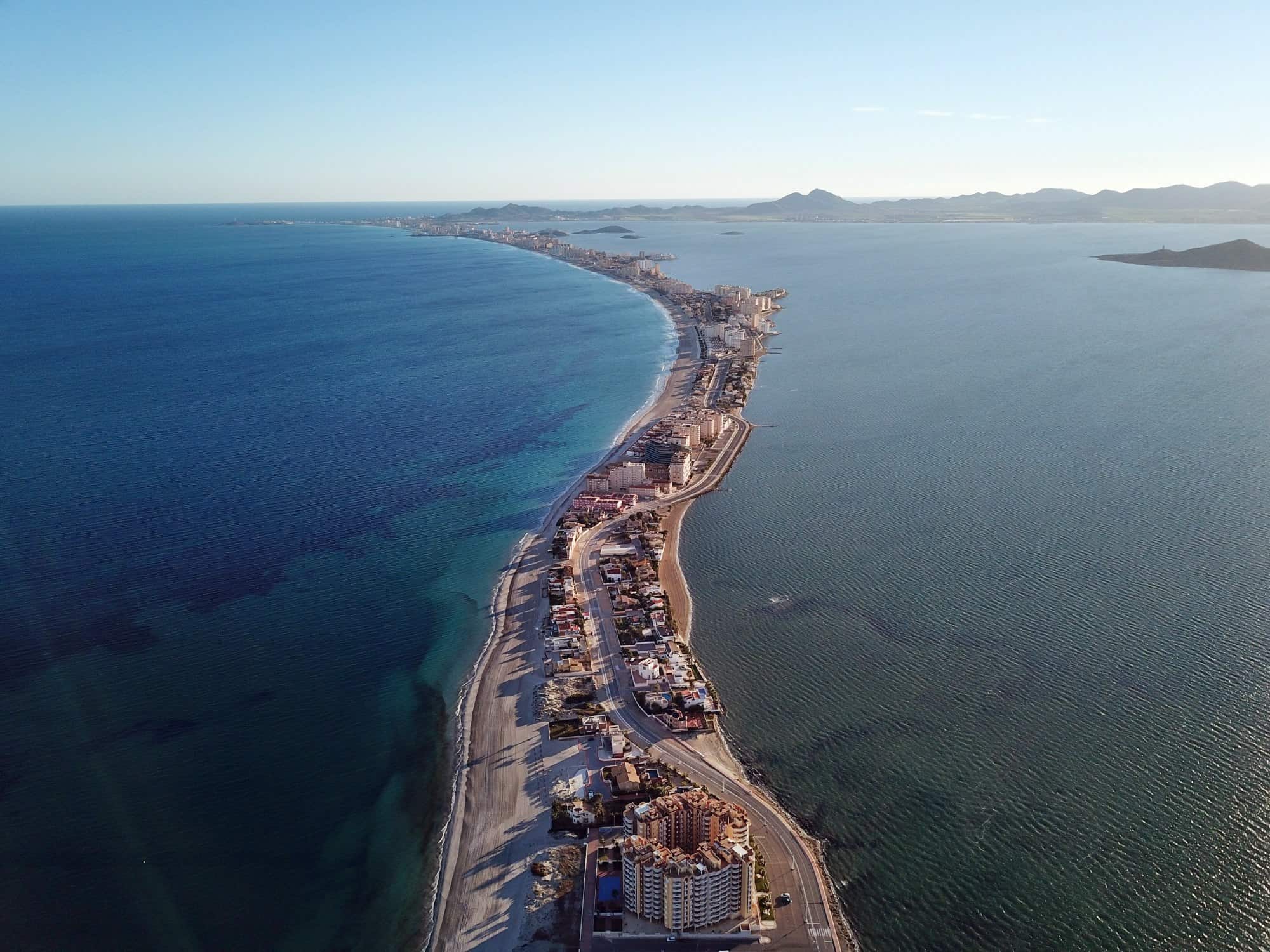
It’s authentically Spanish, maintaining its cultural and historical vibe while being a contemporary and affordable cosmopolitan city.
Almost paradoxically, Murcia is best known as a university city, with public and private universities offering every degree but focusing on IT and business.
Favored by international students, Murcia is always a top ERASMUS choice. Thus, Murcia has one of Spain’s youngest and most diverse populations, with over 140 registered nationalities. All are significant contributors to Murcia’s dynamic nightlife.
While most of Murcia’s numerous international education options are in Murcia city, many more are throughout the region.
Murcia city has an airport, but most people prefer Alicante Airport, which is only 30 miles/45 KM east. Murcia also has two RENFE train stations and the main bus station conveniently located near the city center.
Public transport is effective and cheap. However, as most things are centrally located, and the city is full of plazas and parks, most people prefer bikes, scooters, or walking.
The abundant green space includes water features for the various aquatic bird species that favor the region.
Economically, Murcia is very contemporary, with international banking options and a Bitbase crypto ATM location.
Murcia’s shopping includes Makro, IKEA, El Corte Inglés, Decathlon, high-end brands, and Mercado, Carrefour, Spar, Lidl, and Aldi grocery stores.
Also, there are several malls. The two largest, Nueva Condomina and Thader, are directly on the Tram-line.
How much does it cost to live in Murcia?
Murcia is one of Spain’s most affordable regions. In fact, Murcia has been called the most affordable place to live on the Mediterranean coast.
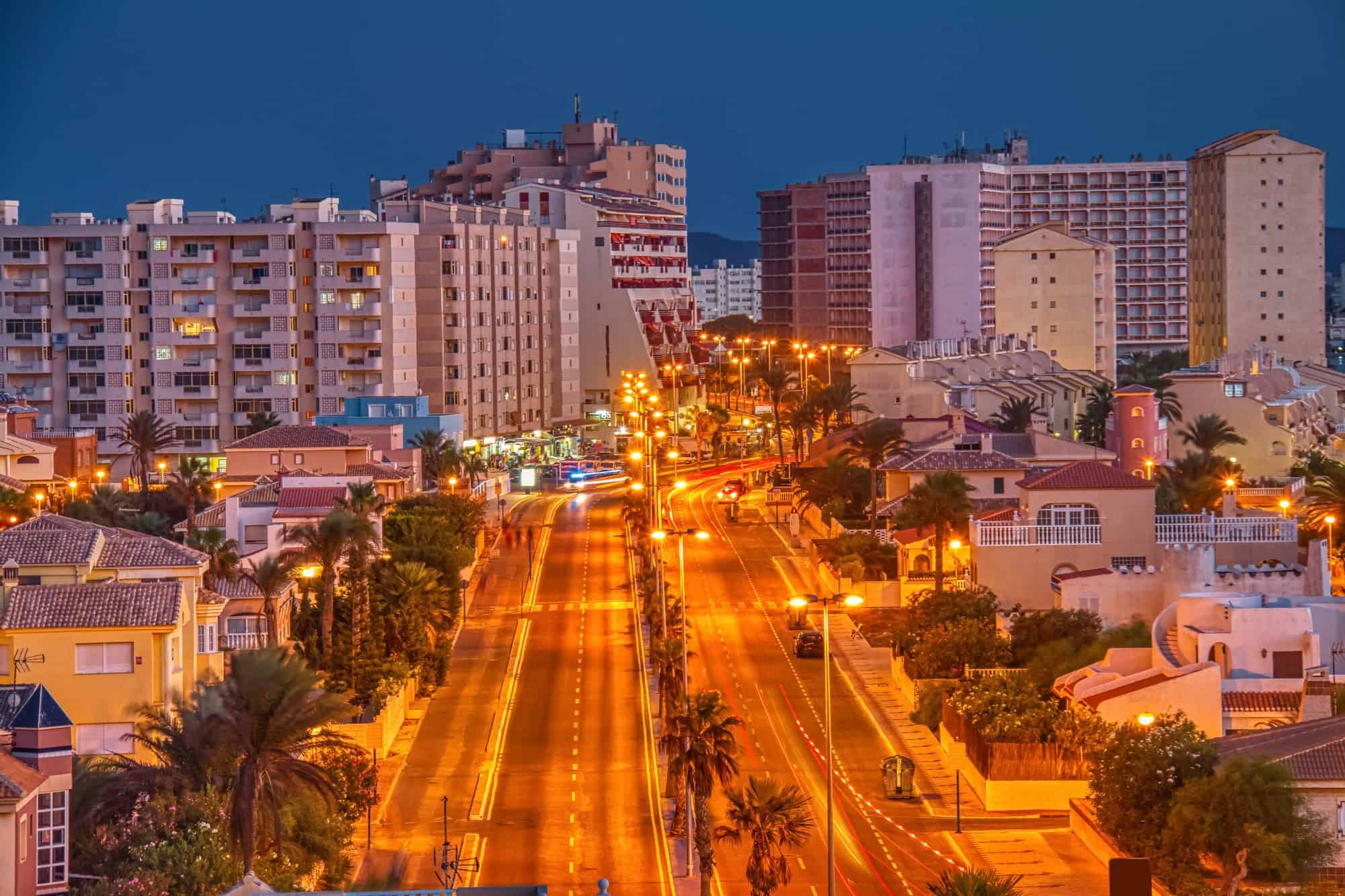
As the universities account for a significant element of its population and economy, Murcia City is livable on a student’s budget.
Students typically share a 2-bedroom in the City Center and divide the average $675/600 euros a month total (rent and utilities).
Monthly public transport averages around $45/40 euros.
A week’s worth of groceries for a family of four averages around $125/110 euros.
That’s not to suggest Murcia city cannot accommodate the high life, it definitely can, but it’s genuinely geared more towards families and youth.
Murcia’s highest cost of living is on the Costa Cálida.
Is Murcia safe?
Murcia is one of Spain’s most tolerant and safest regions and is ranked as such by the Spanish Department of Homeland Security.
Its low crime rate, and threat, are primarily due to its manageable size and university presence coupled with a well-staffed and trained police force.
As everywhere, petty crime does occur, but personal safety is not a daily worry.
University students consistently state they have no concerns or issues when walking alone at night.
Spain is very LGBTQ-tolerant, and Murcia is no different. As a popular university destination, Murcia’s tolerance extends to race, nationality, religion, gender, etc.
Best places to live in Murcia
Let's first speak about Murcia city and its areas and neighborhoods.
Where to live in Murcia City
Murcia offers three distinct zones: North, South, and the City Center.
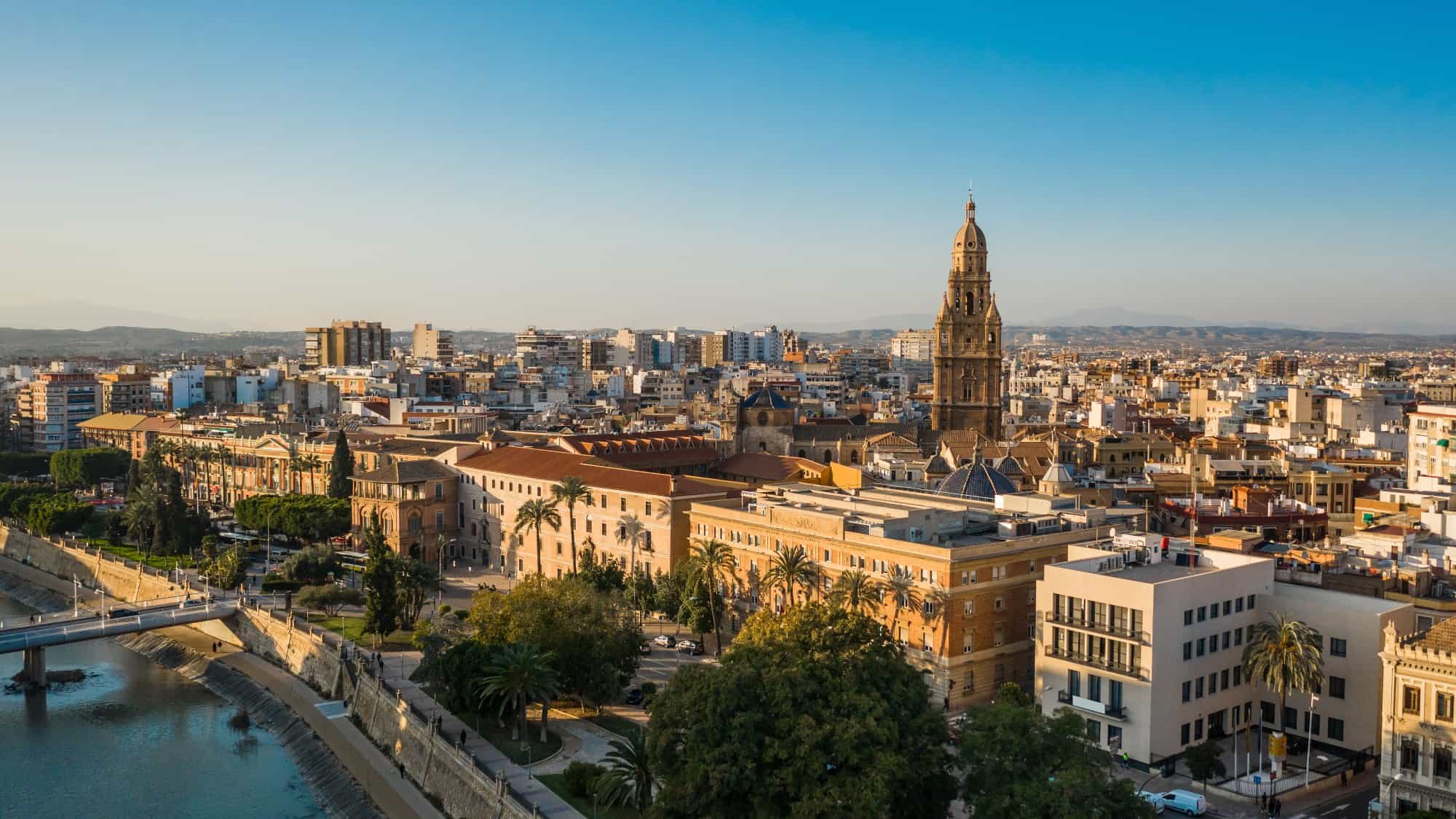
1. The City Center
The City Center has four areas that expats favor: San Lorenzo, Santa Eulalia, La Catedral, and San Miguel.
Insider Tip: The La Fama district offers the center’s lowest rents and is centrally located near La Catedral and San Lorenzo, but the low rent is for a reason, and even locals prefer not to live there. La Fama does have Murcia’s most popular outdoor market, every Thursday, dating back to 1266.
Santa Eulalia and San Lorenzo are student favorites as they offer reasonable rents, but most apartments are dated. These areas cater to the nightlife, as Murcia’s famous party scene, zona de tascas, runs through them.
San Miguel and La Catedral are essentially different ends of Murcia's main street. San Miguel is its northern part, and La Catedral to its south, branching out from Plaza Fuensanta, Murcia’s shopping hub.
If modern and centrally located is what you want, La Catedral is the area, but rents rise accordingly.
San Lorenzo and La Catedral are home to Plaza Santo Domingo and Plaza Cardenal Belluga, possibly the most popular locations in Murcia city. They are full of bars, shops, banks, restaurants, and beautiful history and architecture, such as Murcia’s famous Cathedral, the Real Casino de Murcia, and the Roman Theater.
2. The North
The North, the most popular option, has four primary expat neighborhoods: Vistalegre, La Flota, Juan Carlos I, and Juan de Borbón.
These are genuinely residential family-friendly areas, peaceful, quiet, and very well connected by public transportation to the city center.
Insider Tip: The North offers additional residential family-oriented districts, such as Espinardo. Espinardo has a student and university presence and mostly older refurbished apartments. Most of these areas, including Espinardo, are a bit far from Murcia City Center but connected via the tram and bus lines.
Also, the North is the location of Murcia’s excellent private hospitals.
The North offers the newest and most modern apartments and the highest prices.
3. The South
The South is the most affordable area, a bit contemporarily weathered and relatively quiet. There are more locals here than expats.
El Carmen runs along the Segura River across from Santa Eulalia and Plaza Cardenal Belluga, with walking/vehicle bridges providing easy access to the City Center.
Where to live outside of Murcia city
Murcia has dozens of small towns throughout its mountains and valleys and dotted up and down the Costa Cálida.
Lorca
Named a European Destinations of Excellence, Lorca’s approximately an hour from Murcia city.
Lorca offers international schools, such as Valle del Guadalentín School, and all the necessary functional elements for daily life with more affordable real estate and rentals than Murcia city.
Cartagena
Murcia’s largest and most modern city on the Costa Cálida, Cartagena, is the Mediterranean version of Murcia city.
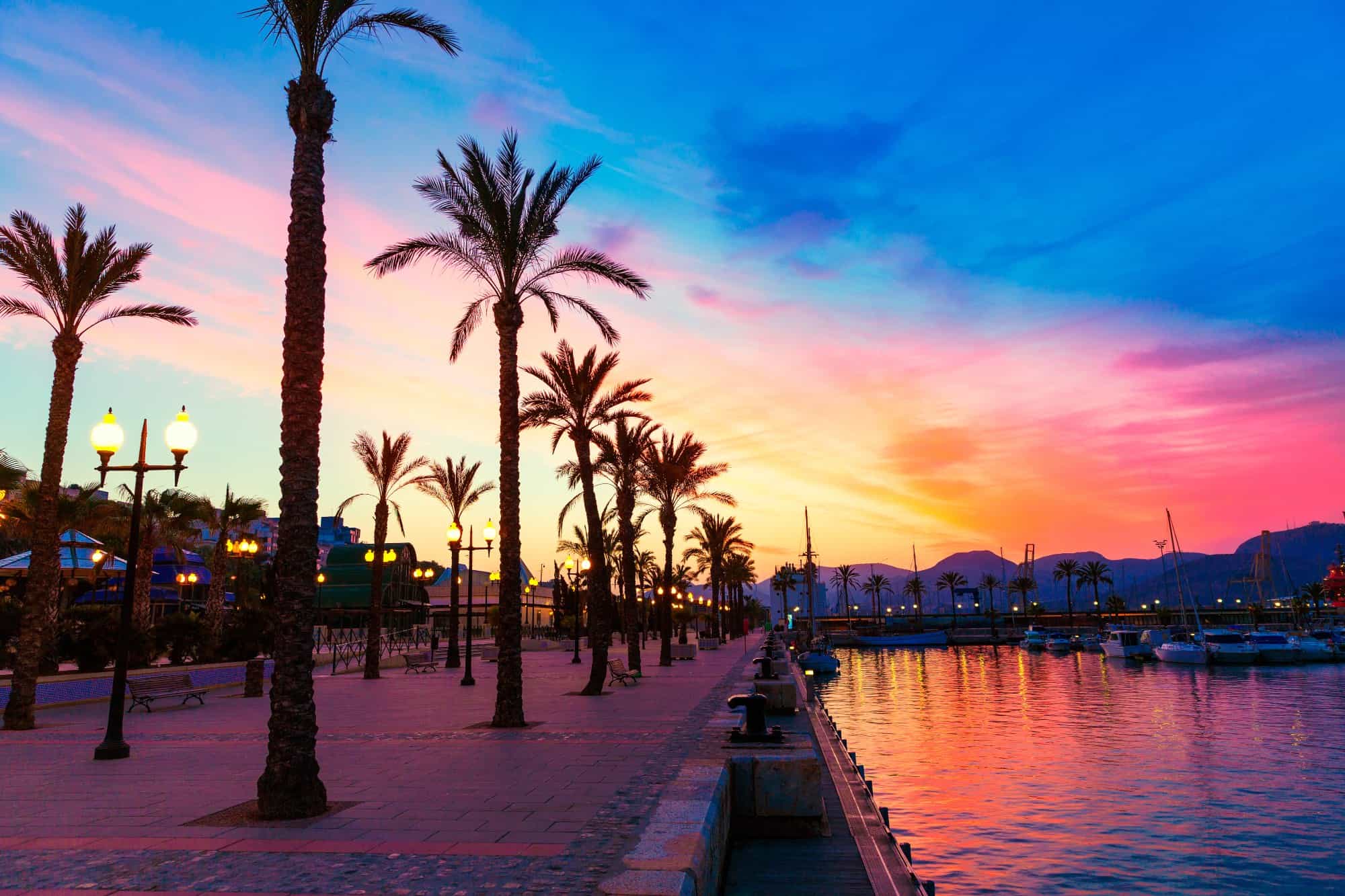
Cartagena and the Costa Cálida are why Murcia is a favored holiday location and a developing expat destination.
Cartagena’s foreign tourists primarily arrive via cruise ship. The port area provides marinas, deep-sea fishing, and numerous archaeological ruins of Murcia’s ancient cities, which extend into neighboring Mazarrón.
Insider Tip: The full-service beaches of Puerto de Mazarrón are family favorites. With a growing expat community in Bolnuevo, it’s still a hidden gem of the Costa Cálida and a perfect summer option for escaping the crowds of Cartagena and San Javier.
Cartagena is 30 minutes west of La Manga, an equally popular summer beach spot. Cartagena, Mazarrón, and La Manga offer the best nudist beaches on the Costa Cálida.
Here you will find great shopping, an incredible food scene, international schools, banking options, and all the amenities you need for a comfortable life. Murcia’s other Bitbase ATM is located here in the large modern mall, Espacio Mediterráneo.
Such a level of comfort and popularity affects property prices.
From Cartagena to La Manga is the most expensive real estate and rentals in Murcia, with a 2-bedroom starting around $140,000/€125,000.
San Javier
San Javier is at the northeastern end of the Costa Cálida. Its coastline is exclusively on the Menor Sea, and to access the Mediterranean, you have to go to La Manga.
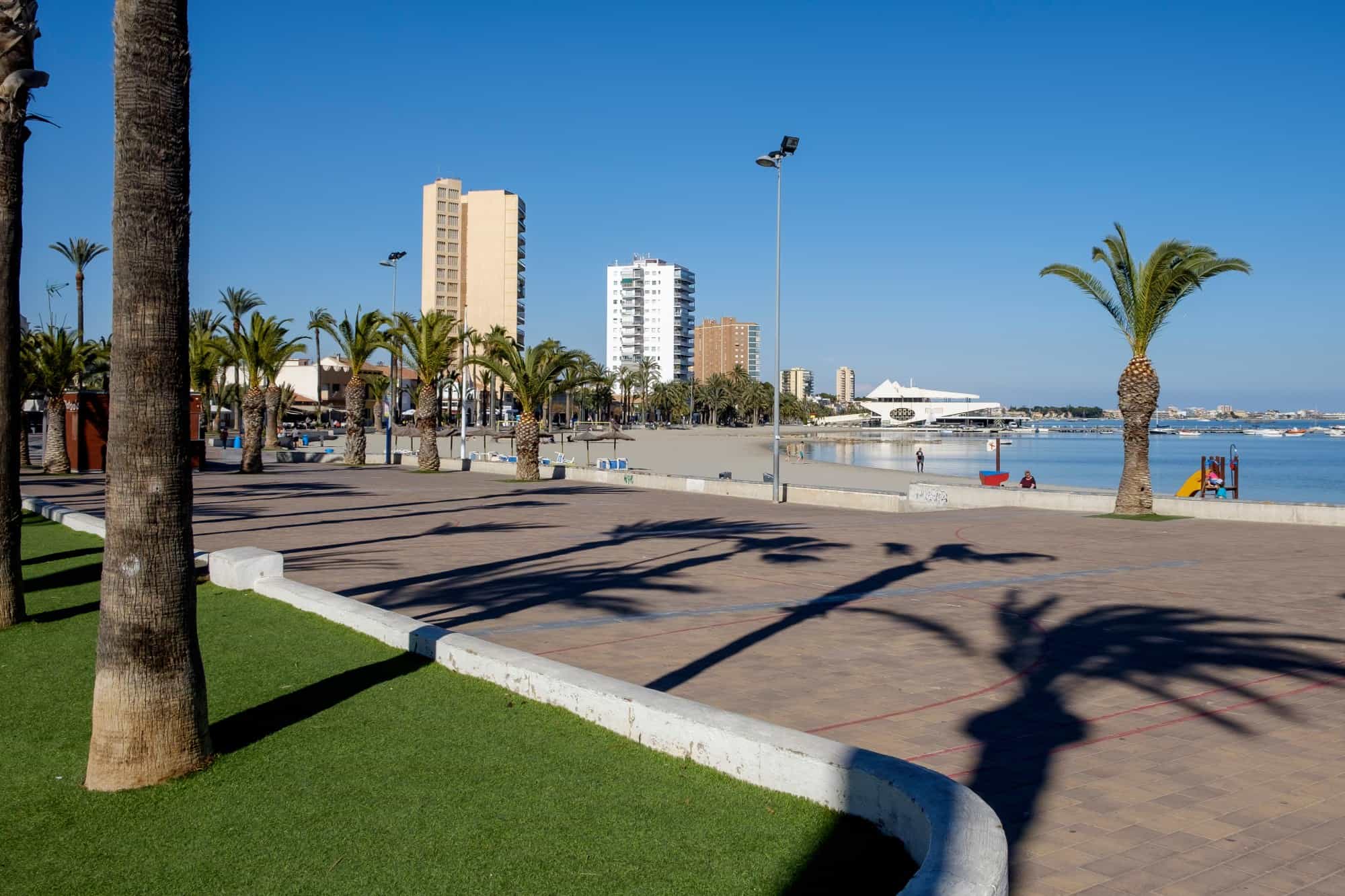
At the point where La Manga and the San Javier coast meet, you will find natural mud baths claimed to have incredible exfoliation and rejuvenation effects and are free to use.
San Javier offers good education, excellent medical facilities, numerous golf courses, entertainment, and all the necessities for daily life. The beach district of Los Alcazares is favored by expats.
San Javier International Airport is Murcia’s largest airport; however, it mostly has routes to/from the UK.
Insider Tip: The Air Force has a special team called La Patrulla Águila, the Eagle Patrol, the Spanish equivalent of the US Blue Angels and the UK’s Red Arrows. They conduct regular stunt flights, defying the law of physics, over the Menor Sea.
San Javier also offers cheaper rent and real estate than Cartagena, with two bedrooms starting around $100,00/€90,000.
Insider Tip: Halfway between Murcia city and San Javier is the small town of Sucina. It's a functional town with an expat presence, offering everything for daily life and very reasonable rents, though apartments are typically dated. It's roughly 20 minutes to the Menor Sea, La Manga, the Costa Cálida, and Alicante’s Costa Blanca.
Where to retire in Murcia?
Spain is a great expat retirement option, and Murcia should definitely be on the list of locations to consider.
Murcia offers excellent private medical options, and its public medical institutions are on-par with the rest of Spain.
As Murcia city is a university city, most expats prefer to retire on the Costa Cálida.
San Javier and Cartagena are epicenters of the Costa Cálida ex-pat community and are an hour’s drive from Torrevieja, an ex-pat retirement hub on Alicante’s Costa Blanca.
Growing expat communities in Lorca, Sucina, Mazarrón, Balsicas, and Aguilas are worth exploring too.
The pros and cons of living in Murcia
The cons of living in Murcia
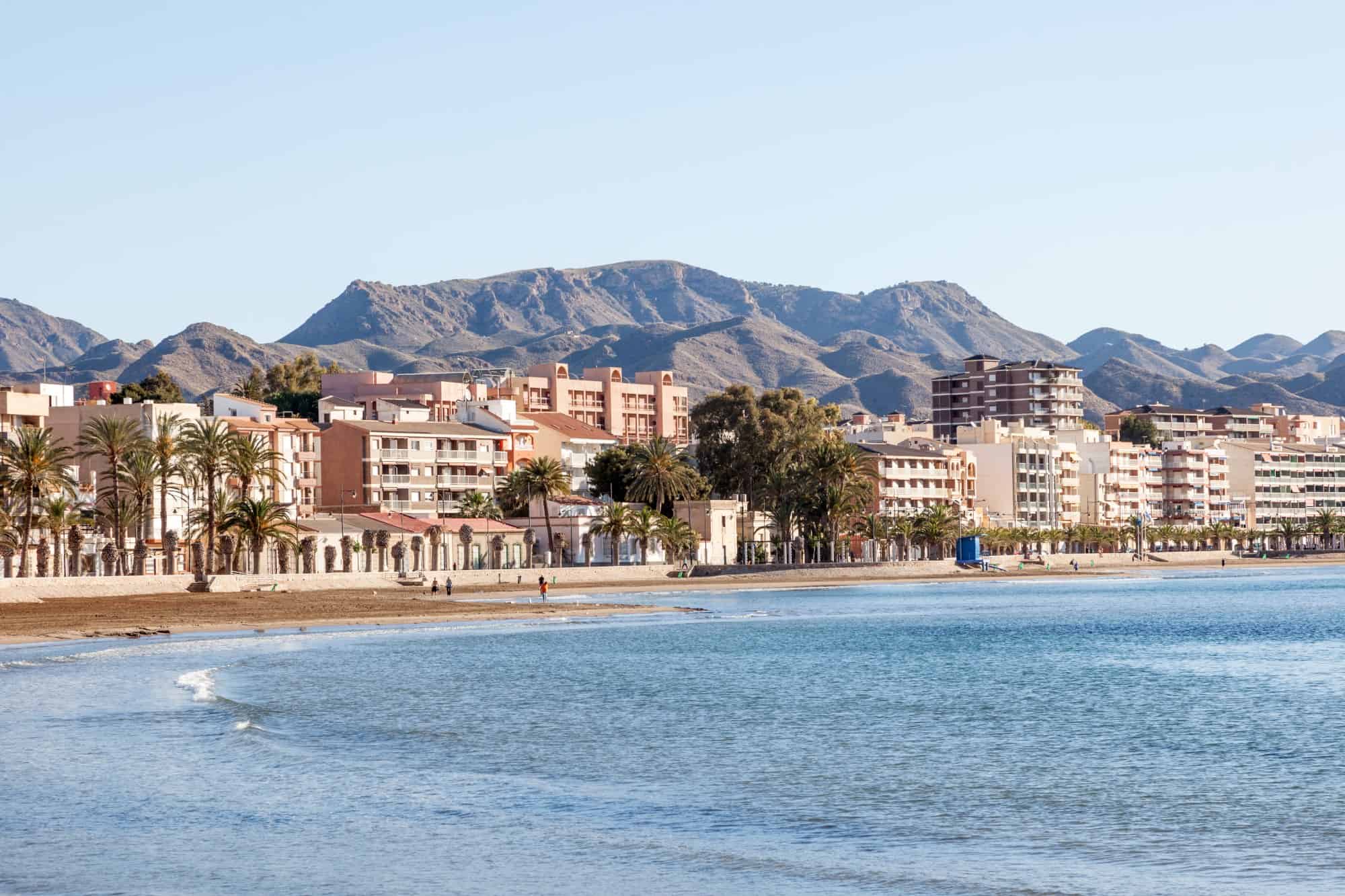
1. English is not widely spoken
As with much of Spain, English is not widely spoken anywhere in Murcia; this includes the hospitals and clinics. Some pharmacies have English-speaking staff.
Cartagena and San Javier have the most English-speaking locals, but learning at least conversational Spanish will be necessary.
2. Murcia’s Spanish
Murcia has its own, very unique accent and dialect that you need to get accustomed to. So, it may be best to learn Spanish in Murcia instead of prior to moving here.
3. The traffic is muy loco
Murcia City is more accommodating for walking, scooters, and biking than driving. Traffic is typically cited as Murcia’s worst aspect, even worse than in larger cities.
The pros of living in Murcia
1. “No pasa nada”
You will hear locals saying this phrase all the time. ‘No pasa nada’ means ‘don’t worry about it’, and that is the essence of Murcia.
The people are very relaxed and laid back. If you have ever dealt with the Spanish bureaucracy, then you should be well-prepared to handle the speed of life in Murcia.
2. Europe’s orchard
The main reason Murcia has Spain's best food is that it's the main fruit and veg grower in Europe. The freshness and flavor of the produce in supermarkets or outdoor markets is amazing.
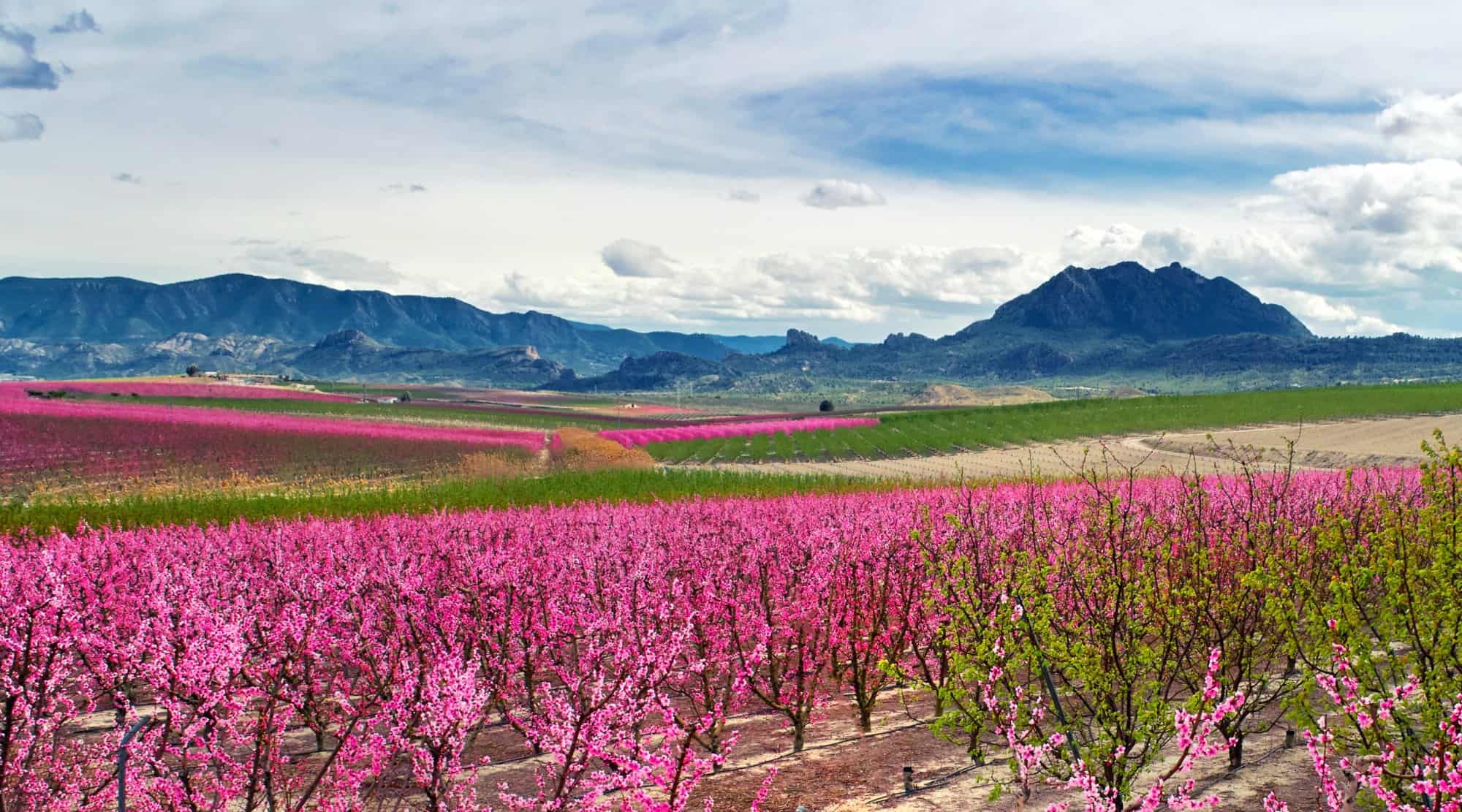
3. Murcia's incredible food and wine
We can't possibly discuss living in Murcia without mentioning the wonderful food and good wine that is available.
With a glorious climate and fertile soils, Murcia's food and wine producers capitalize on a long growing season to create an abundance of rich produce and majestic wines.
You'll be spoilt with the most dazzling varieties of fruit and vegetables.
With fresh seafood, locally produced meat, and a wide variety of vegetables and other local produce nurtured on Mercia's fertile land, you have the perfect environment to create the most amazing gastronomy.
So get ready for plenty of rewarding and truly indulgent feasts.
Among the highlights of the region's culinary delights are rice dishes, dried sausages called "embutidos", a variety of stews, meat pies, preserved foods, nuts, fruit, and a range of traditional confectionery.
Murcia also claims the honor of having Spain’s best tapas and even has its own version of the seafood paella called Caldero.
Some of the dishes you must try are:
Olla Gitana - a traditional Spanish stew that comes from Murcia cooked with pears and almonds and combined with a dazzling variety of vegetables and pulses, including pumpkin, onions, tomatoes, green beans, etc.
Marinera - a tapa dish that you will find on the menu of every bar or cafe. In essence, Marinera is a bit like a crunchy donut topped with a seafood salad, although you really need to sit down and enjoy Marinera yourself to appreciate its rich flavor.
It's important to note that one Marinera dish won't tell the whole story. As Marinera varies from bar to bar and is almost never the same, you're going to love exploring the varieties.
You could visit a different bar or cafe every day, absorbing Murcia's culture while enjoying new tastes with each variation of Marinera.
Murcian meat pie - one of the top signature meat dishes of the region, Murcian meat pies are another wonderful dish you won't want to miss out on. This beautiful spiral-shaped pastry with a mouth-watering filling of beef, chorizo, ham, and other ingredients is a delight.
Meat pies are a big part of Murcia's spring festival, the Fiestas de la Primavera - the local festival of spring and growth celebrated in April, during which thousands of meat pies and liters of beer are handed out to visitors free of charge.
And let's not forget a feast is never a great feast without good wine. The locally grown grape variety, Monastrell, produces a delicious rich wine with deep color and high tannin content. If you are a dedicated wine lover, you will have to make the time to go on a tour around the three wine-growing areas in Murcia.
Where to go for a meal of your life
Locals favor Plaza Flores near La Catedral for some of the best food and drinks in Murcia city.
Magoga, a Michelin-starred restaurant, is hailed as one of Cartagena’s and Costa Cálida’s best restaurants.
Final thoughts on living in Murcia
There are many reasons why Spaniards and expats love Murcia. Murcia city is large enough to have everything but small enough to be home, historical yet contemporary, with a wide range of leisure activities. And it's affordable whether you want to rent a property or buy your own home in Spain.
The Costa Cálida, Menor Sea, and La Manga are among the most unique coastlines in the Mediterranean.
If the 21st century and authenticity are what you want in a Spanish destination, Murcia is for you.
Other popular locations in Spain to consider:
- All About Living On The Costa De La Luz, Spain As An Expat
- What’s It Like Living In Mallorca As An Expat
- Living In The Canary Islands: The Pros & Cons For Expats
- What’s It Like Living In Estepona As An Expat?
- Living In Marbella – The Pros & Cons For Expats
You might find useful:
- Living In Spain – practical tips and information on Spanish visas, residency, healthcare, taxes, the pros and cons and more
- Best Places To Live In Spain – the best and most popular expat locations in Spain
- Didn’t find what you were looking for or need further advice? Comment below with your question; we will do our best to help.
Helpful external links:
- Murcia: culture and events - murciacultura.es.
- Murcia electronic office for local services - sede.murcia.es
Secure Peace of Mind with Best-Value International Health Coverage
International Citizens Insurance provide free, no-obligation quotes from the leading international health insurance providers with plans tailored to meet your needs. Trusted by thousands of expats worldwide.










